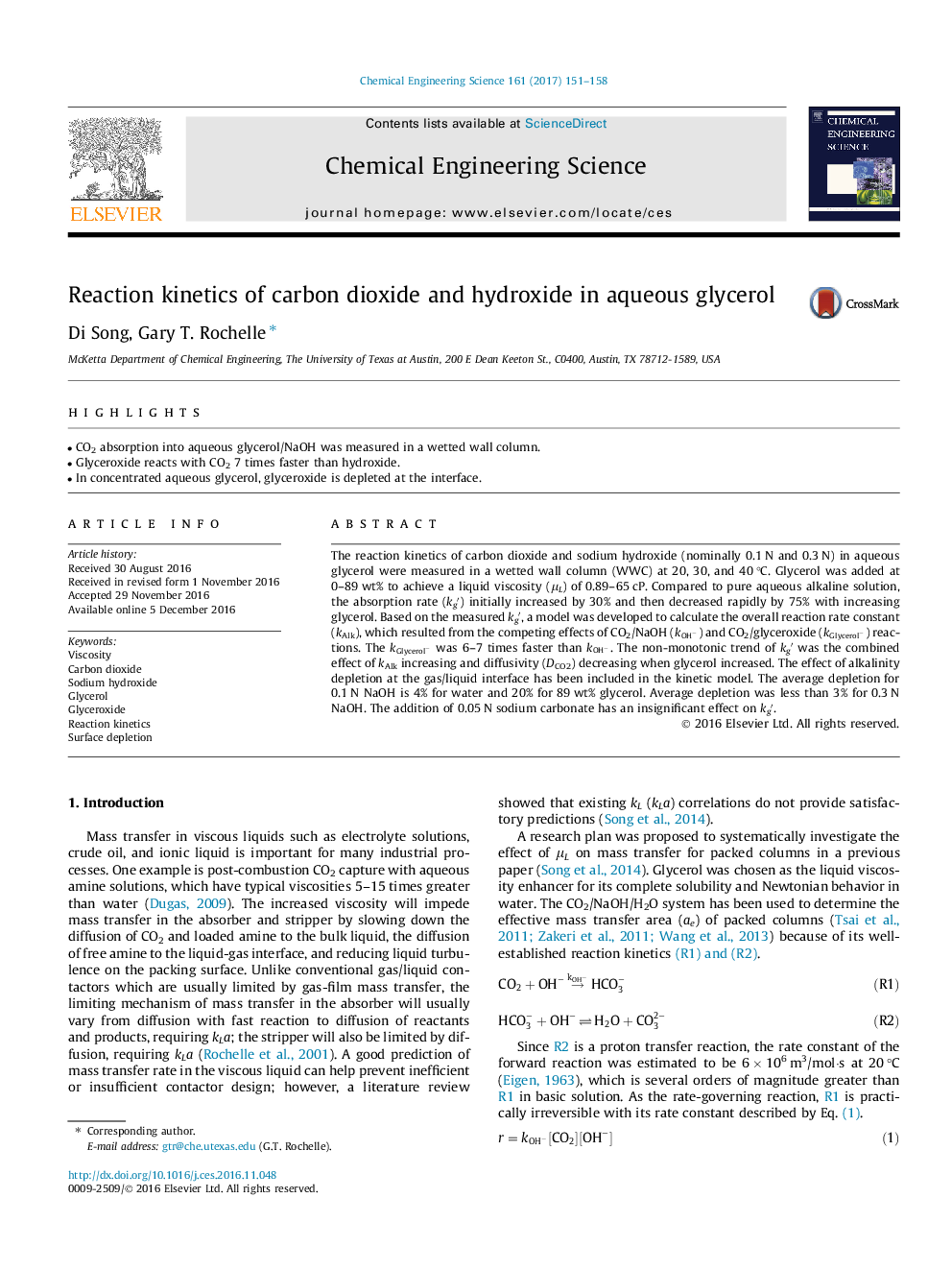| Article ID | Journal | Published Year | Pages | File Type |
|---|---|---|---|---|
| 6467521 | Chemical Engineering Science | 2017 | 8 Pages |
â¢CO2 absorption into aqueous glycerol/NaOH was measured in a wetted wall column.â¢Glyceroxide reacts with CO2 7 times faster than hydroxide.â¢In concentrated aqueous glycerol, glyceroxide is depleted at the interface.
The reaction kinetics of carbon dioxide and sodium hydroxide (nominally 0.1 N and 0.3 N) in aqueous glycerol were measured in a wetted wall column (WWC) at 20, 30, and 40 °C. Glycerol was added at 0-89 wt% to achieve a liquid viscosity (μL) of 0.89-65 cP. Compared to pure aqueous alkaline solution, the absorption rate (kgâ²) initially increased by 30% and then decreased rapidly by 75% with increasing glycerol. Based on the measured kgâ², a model was developed to calculate the overall reaction rate constant (kAlk), which resulted from the competing effects of CO2/NaOH (kOH-) and CO2/glyceroxide (kGlycerol-) reactions. The kGlycerol- was 6-7 times faster than kOH-. The non-monotonic trend of kgâ² was the combined effect of kAlk increasing and diffusivity (DCO2) decreasing when glycerol increased. The effect of alkalinity depletion at the gas/liquid interface has been included in the kinetic model. The average depletion for 0.1 N NaOH is 4% for water and 20% for 89 wt% glycerol. Average depletion was less than 3% for 0.3 N NaOH. The addition of 0.05 N sodium carbonate has an insignificant effect on kgâ².
